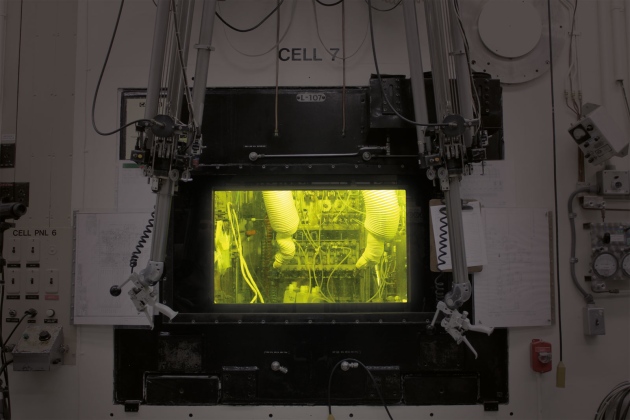A ‘hot cell’ at Oak Ridge National Laboratory, where plutonium is processed.
In the journal Nature, Alexandra Witze writes about a precious commodity for the American space program--plutonium.
NASA currently has 35 kilograms of plutonium-238 to power its deep-space
missions, but that won't get us very far, and they're worried about
running out. The story explores research into creating more of the stuff
at Oak Ridge National Laboratory (ORNL) in Tennessee:
The isotope is not found in nature, so it has to be made in nuclear reactors. But the main US supply shut down in 1988, when the Savannah River Plant near Aiken, South Carolina, run by the Department of Energy (DOE), stopped making 238Pu as part of a nuclear-weapons phase-out. Four years later, the DOE began purchasing small amounts of the isotope from the Russian government, but those acquisitions have also ended.
As a result, NASA now has just 35 kilograms of plutonium product — a small supply that may not match the demand to send missions to Mars, the moons of Jupiter and beyond. And the crunch got even worse in late 2013, when budget constraints led NASA to cancel a program to develop a radioisotope power source that would have used one-quarter of the plutonium of conventional designs.


No comments:
Post a Comment